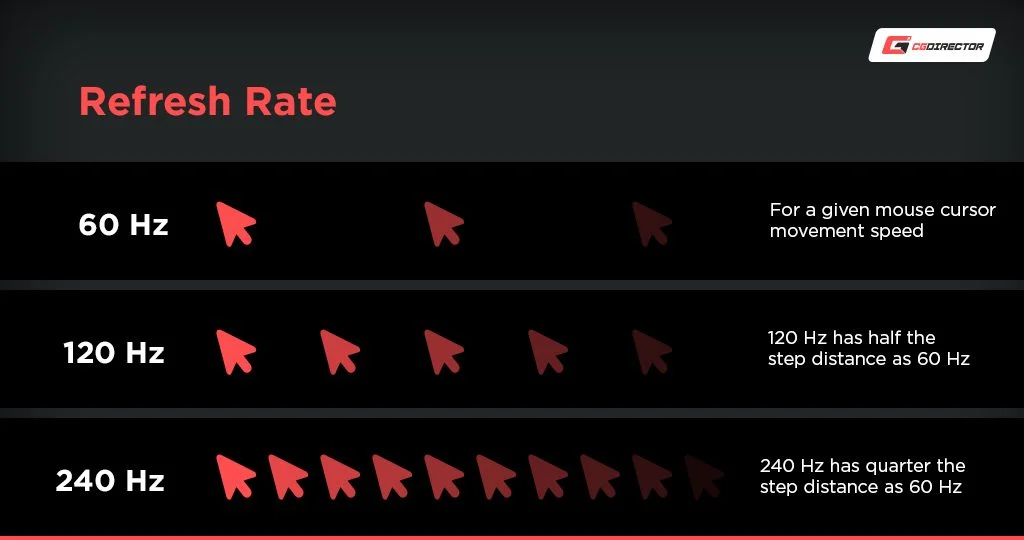What Is FreeSync Monitor? (Explained)
 James Williams
James WilliamsFreesync is a technology launched by AMD in 2014. It aims to reduce screen tearing and stuttering by adjusting the refresh rate of the monitor.
Monitors which come with the Freesync technology are called Freesync Monitors. These Freesync monitors will synchronize the refresh rate with the output of the graphics card.
Before we proceed any further, let us try to understand these terms (Refresh rate, screen tearing, screen stuttering) in detail so that we can have a clear understanding of the technology.
1. Refresh Rate
The refresh rate is the number of times that a monitor refreshes its screen to display the frames in one second. It is measured in Hertz.
Refresh Rate is important because it determines the smooth functioning of the monitor. And if you are a gamer, the refresh rate accuracy should be very important to you and hence, so is Freesync.

2. Screen tearing
Screen Tearing occurs when the monitor displays multiple frames in one screen draw. When the refresh rate and the frame rate fail to match, screen tearing occurs disrupting the user to see 2 frames at once.
The problem of screen tearing can be annoying, especially when you are a pro gamer, being at a crucial point of the game, screen tearing can truly disappoint.
Read more about PC monitors on trustedmonitors.com

3. Screen stuttering
Screen stuttering starts to occur when the refresh rate and the frame rate fail to match the standard rate of the monitor.
If you are playing a game, the game starts to lag and movements are slow.
To sum it all up, a Freesync monitor will modify its refresh rate to match the AMD graphics’ card frame rate. This in turn will ensure a smooth-running game without any annoying screen tearing or screen stuttering.
So, if you are an avid game player then Freesync should be a necessity in your monitor. If you do not know how to enable Freesync yet, then the next section will tell you how you can enable the technology on your monitor.

How to enable Freesync?
Here’s the catch, if you want your monitor to be a Freesync monitor, then it should be AMD Freesync Compatible plus you’ll also need a GPU that is compatible with the Freesync technology.
Firstly, ensure that the graphics device has the latest driver successfully installed. After installing the display driver, Freesync should be enabled by default in Radeon Settings. To verify that Freesync is enabled in the driver:
- Right-click on your desktop and select AMD Radeon Settings
- Click on the Radeon Settings icon in the System Tray
- Select Radeon Settings from the Programs menu
- Click on Display
- Confirm that AMD Freesync is on. (AMD Freesync can also be turned off from this menu)
- Once changes have been made, close Radeon Settings.
That was all you had to do. The above-mentioned instructions were taken from the AMD website itself for accuracy. You can refer to the website yourself too, here: How to Enable AMD Freesync™ | AMD
You can easily calculate the aspect ratio of any monitor from here: https://trustedmonitors.com/aspect-ratio-calculator/
Freesync Monitors V.S. G-Sync Monitors
Now, we arrive at the real question. With all the technologies available in the market like G-Sync, why should one go for a Freesync monitor? Is Freesync really worth it?
Even though both the technologies strive to achieve the same target which is synching the refresh rate, G-Sync is launched by NVidia whereas Freesync, as we learned, was launched by AMD.
Freesync works by keeping the monitor’s refresh rate in sync with the AMD processor, but you’ll require a monitor that is compatible with an AMD graphics card. G-Sync will work by synching the monitor’s refresh rate to the frame rate being produced by the NVidia graphics card.
One major advantage that Freesync has over G-Sync is its affordability. As compared to G-Sync, Freesync is not very expensive and is the most commonly used technology by gamers. However, that doesn’t mean that G-Sync is any less.
Freesync is worth spending money on because it produces an impressive refresh rate, you will not be disappointed by the amazing visuals and the difference that it will produce.
Conclusion
Imagine, you are playing a game and it’s the critical war action time, but your game starts stuttering and the characters start having slow movements.
Not only will it interrupt your path to victory, but will also make you worry regarding the frequent visuals of the game. At times like these, Freesync monitors will work like magic.
Thus, we can easily say that Freesync monitors work great for gamers who want to take their gaming experience to the next level.
Freesync monitors use the Freesync technology launched by AMD, to contain the refresh rate of the monitor to that of the frame rate.
In this article, we learned how we can enable and make use of the AMD Freesync technology in our monitors. We hope this article helped you clearly understand and learn about the benefit of Freesync monitors.
Subscribe to my newsletter
Read articles from James Williams directly inside your inbox. Subscribe to the newsletter, and don't miss out.
Written by

James Williams
James Williams
Hey Guys! My name is James Williams and I am the Editor of the website trustedmonitors.com. Professionally, I am a Computer science student who is very interested in PC gadgets and the latest technologies.